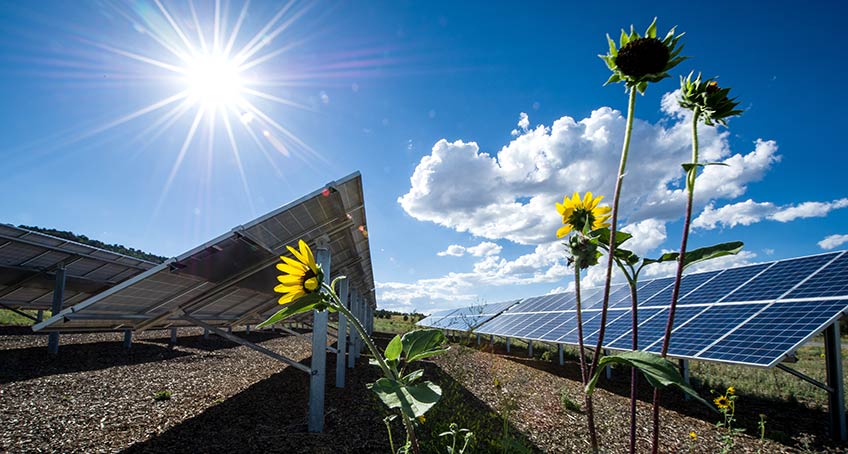Photovoltaic (PV) Technology Convert Sunlight into Electricity

Photovoltaic (PV) technology converts sunlight directly into electricity through the use of photovoltaic cells, commonly known as solar cells. Here's how the process works:
Absorption of Sunlight: When sunlight, which is composed of photons (particles of light), strikes the surface of a photovoltaic cell, some of the photons are absorbed by the semiconductor material of the cell. The most commonly used semiconductor material in PV cells is silicon.
Generation of Electron-Hole Pairs: The absorbed photons transfer their energy to electrons in the semiconductor material, causing them to become excited and break free from their atomic bonds. This process creates electron-hole pairs, where the freed electrons are negatively charged and leave behind positively charged "holes" in the semiconductor material.
Separation and Collection of Charges: The electric field within the semiconductor material of the PV cell causes the negatively charged electrons to move towards the n-type (negative) side of the cell, while the positively charged holes move towards the p-type (positive) side. This separation of charges creates an electric current within the cell.
Generation of Direct Current (DC) Electricity: By connecting metal contacts on the top and bottom layers of the PV cell, the separated charges are collected and transferred as electric current. This current flows in one direction, generating direct current (DC) electricity.
Conversion to Alternating Current (AC): Since most electrical appliances and the electricity grid operate on alternating current (AC), the DC electricity produced by the PV cell needs to be converted into AC. This conversion is done by an inverter, which is typically installed near the main electrical panel of a building or connected to the PV system.
Utilization or Distribution of Electricity: The AC electricity produced by the PV system can be used immediately to power electrical devices within a building or home. Any excess electricity generated can be fed back into the grid if the PV system is grid-connected, often through net metering arrangements. Alternatively, energy storage systems, such as batteries, can store excess electricity for use during times when sunlight is not available.
This process of converting sunlight into electricity through photovoltaic technology enables the generation of clean and renewable energy, contributing to a more sustainable energy future.
Thank you,
